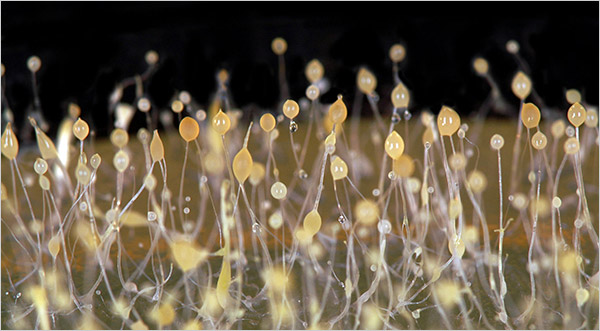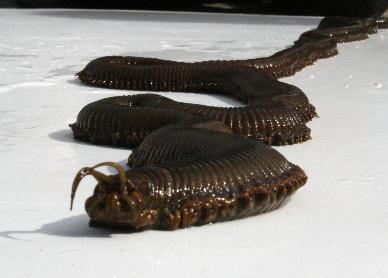Reading a story about a colony of billions of amoeba, a colony so big that it was visible across a 40 foot area is pretty spooky.

Reading further in the article about:
- the fact that these are “clonal” amoeba–all genetically identical copies,
- the fact that these amoeba can apparently work together and function as a kind of hive organism,
- the fact that the colony just washed away (or, to use a scarier term, “dispersed”),
- the fact that there are other amoeba who can reach visible size,
- and the supposition that there may be giant amoeba, or amoeba colonies, all around us,
was enough to make me think that there wouldn’t be another “strange lifeform” piece of science journalism that would creep me out quite so much this week.
I was wrong about that though.

That thing is a four-foot long coral-eating worm. Apparently it’s the solution to a nice little science mystery:
Staff at the award-winning attraction had been puzzled by violent attacks on their fragile living reefs – in some cases the corals had been literally cut in half.
After staking out the display for several weeks, aquarists decided as a last resort to take it apart rock by rock.
Halfway through the process the terrifying perpetrator was finally revealed – a monstrous four-foot-long giant reef worm.
To me that looks like something a particularly twisted special effects designer would come up with when working on a post-apocalyptic horror movie.
The scientists agree, by the way:
“It really does look like something out of a horror movie! It’s over four feet long with these bizarre-looking jaws. Having done some research we also discovered that it is covered with thousands of bristles which are capable of inflicting a sting resulting in permanent numbness’.”
Yikes.


2 comments for “Scary Creatures From The World Of Science”